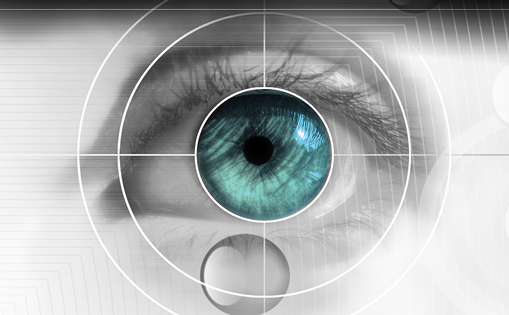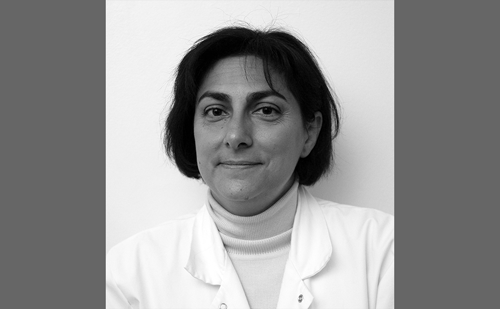Cataract surgery is one of the most commonly performed surgical procedures worldwide. Between 2000 and 2020, the number of people aged 65 or over is projected to increase from 425 million to 677 million worldwide.1 This is likely to be accompanied by a corresponding increase in the incidence of cataracts and it has been estimated that by 2020, 32 million cataract surgeries will be performed annually (see Figure 1).1
Phacoemulsification, the most commonly performed type of cataract surgery, requires manual creation of an opening in the anterior lens capsule, fragmentation and evacuation of the lens tissue with an ultrasound probe, and implantation of a plastic intraocular lens (IOL) into the remaining capsular bag. Femtosecond laser technology was approved by the US Food and Drug Administration (FDA) in 2010 for use in cataract surgery including the creation of surgical incisions in the cornea, formation of the capsulotomy, and lens fragmentation following initial clinical demonstrations of its efficacy.2 Current femtosecond laser technologies use a near infrared femtosecond laser focused to a spot size of less than 6 μm.3 Femtosecond photodisruption is achieved by generating a plasma in the tissue. This plasma, comprising free electrons and ionized molecules, then expands and causes a shock wave, cavitation, and formation of a bubble, which expands and then collapses, causing tissue separation.3 By fragmenting a cataractous lens, this technique minimizes the potential deleterious manipulations and reduces the energy required to emulsify the lens compared with non-laser-assisted phacoemulsification. Manipulations are performed within a closed chamber offering greater safety, particularly in potential cases of floppy iris syndrome.4,5
Femtosecond laser-assisted cataract surgery (FLACS) potentially offers a paradigm shift in cataract surgery. Clinical evidence in support of the use of the technique is rapidly accumulating, but the technology involves significant financial and logistical factors.6 While concerns persist regarding its cost-effectiveness,7 recent evidence suggests that, despite the initial financial outlay, FLACS represents a viable financialapproach for busy practices.8 However, unanswered questions remain,e.g. whether the anterior capsulotomy made by laser is as smooth as a manual capsulorhexes. Long-term visual and refractive outcomes are not yet known. It is also not yet known whether the technique will result in significantly lower rates of endophthalmitis, dropped nuclei, vitreous loss, and posterior capsular opacification. This article will review the literature relating to the benefits and challenges of FLACS and compare the available laser platforms.
The Benefits of Femtosecond Laser-assisted Cataract Surgery
The benefits of FLACS are described below and summarized in Table 1. However, it should be noted that studies were of varying methodological quality.
Capsulotomy Strength
The femtosecond laser creates a round opening in the anterior capsule by dissecting it with a circular laser pattern crossing the anterior capsule. This has several advantages over manually created openings, which is considered to be the most technically challenging aspect of cataract surgery.9 The capsular openings created in FLACS have increased strength and rupture force compared with those in manual capsulorhexis in cadaveric eyes.2,10–12 This may reduce the incidence of intraoperative tears to the capsular bag, a source of complications in cataract surgery. Initial data on FLACS suggest an incidence of anterior tears of 0.2 %.13 Manual cataract surgery have reported incidences between 0.79 % and 5.3 %.14–17
Capsulotomy Accuracy and Precision
Capsulotomies using FLACS are more precise than manual capsulorhexes.2,11,12,19 The unpredictable diameter observed in manual capsulorhexis may lead to an irregularly shaped capsulotomy and influence the position of the implanted IOL, which may cause a decrease in visual quality.20 Capsulotomies created during FLACS were more regularly shaped than those in manual capsulorhexes, with better centration, and better IOL/capsule overlap compared withmanual capsulorhexes.21,22
Smooth, regular edges may offer superior capsular strength and resistance to capsular tears, although the significance of capsular edge smoothness is not fully understood.23 Two recent studies used SEM to determine capsulorhexis cut quality at different energy settings and evaluated differences between laser and manual technique (see Figure 2).24,25 Both studies found the cut surface was smoother in the manual group.24,25 In FLACS, the degree of irregularity was higher with increased energy settings.25 In a study to evaluate cell death and ultrastructural morphology of capsulotomies, cut edge surfaces were found to be smoother and there was a lower level of cell death when laser pulse energy was reduced to 5 μJ—this level of smoothness was similar to the levels observed in manual capsulorhexis.26 A separate study comparing FLACS platforms and manual techniques noted a marked improvement in capsular edge smoothness with upgrades in all laser platforms (see Figure 2). Unlike previous studies the improvement in smoothness of FLACS capsulotomy edge was confirmed using objective criteria such as coefficient of variation(CoV) and gray level co-occurrence matrix (GLCM) analysis.24 The latter examined the inter-pixel changes in grayness of the scanning electron microscopy (SEM) images of the capsulotomy edge. The study noted that some FLACS platforms approached manual capsulorhexis when usingCoV and were statistically no different when examining GLCM analysis.
FLACS is also associated with less lens tilt,27,28 and fewer internal aberrations,28 which may result in improved optical quality therefore improving postoperative visual acuity and quality of vision.28 Tilting of the lens induces a considerable amount of ocular coma‐like aberrations.29 In fact, poor positioning of an IOL is one of the main indications for removal, exchange, or repositioning of a posterior chamber IOL.30 A study demonstrated a significantly better predictability of IOL power calculation than conventional phacoemulsification surgery.31 However, in this study, the results from the manual group were inferior to those published in other papers, potentially inflating the comparative outcomes.31 As surgical experience increases, it is becoming apparent that different parameters may influence visual outcomes: in a comparison of 6.0 mm versus 5.5 mm capsulotomies, vertical and horizontal tilt were significantly higher in the 6.0 mm group than in the 5.5 mm group.32 Such subtle refinements were not possible before FLACS.
In a study investigating the visual and refractive outcomes in 61 eyes undergoing FLACS with implantation of a diffractive multifocal IOL, outcomes did not differ statistically from those in the manual phacoemulsification group.33 However, the manual group had exceptionally good outcomes that were difficult to improve upon, and this was an early study of FLACS, illustrating the difficulty of interpreting clinical studies.33
Effective Phacoemulsification Time
Another major advantage of FLACS is a reduction in the time and energy required for the fragmentation of the cataract, resulting in decreased effective phacoemulsification time (EPT) compared with ultrasound procedures.34,35 This may to lead to decreased corneal endothelial cell loss (ECL) and corneal edema in the early postoperative phase, resulting in faster visual recovery.36 The use of phaco energy may be avoided in some cases: a comparative study of manual and FLACS procedures found that mean EPT was reduced by 83.6 % in the FLACS pretreatment group (p<0.0001) compared with controls, with zero EPT in 30 % (p<0.0001). EPT was reduced by 28.6 % within the FLACS group using improved lens fragmentation algorithms, and a further 72.8 % reduction was achieved with a 20-gauge phacoemulsification tip. Overall, there was a 96.2 % reduction in EPT between controls and the optimized FLACS group, which was associated with a 36.1 % reduction in ECL in the femtosecond group.36 Reductions of 39 %12 and 51 %2 EPT have also been reported. A more recent study reported an EPT of 0.16±0.21 seconds compared with 4.07±3.14 seconds in the control group.37 Other studies have examined the effect of different fragmentation softening grids: a 350 μm grid softening led to a statistically significant lower EPT than the 500 μm grid (mean EPT 0.03±0.05 seconds versus 0.21±0.26 seconds).38
The level of EPT required also depends on the degree of cataract severity. A recent retrospective, nonrandomized, consecutive case series found that overall mean EPT was significantly lower in FLACS (1.58±1.02 seconds) compared with 4.17±2.06 seconds in group 2 (p=0.001), and that EPT correlated positively with preoperative lens opacity.39
Safety
Numerous studies support the safety of the FLACS procedure,2,12,40 and a prospective study of 1,500 consecutive cases, from a group practice, found that surgical outcomes are equal to or better than best practice in terms of complications.41 FLACS is associated with less corneal swelling in the immediate postoperative period and less trauma to corneal endothelial cells compared with ultrasound phacoemulsification procedures, as shown by central corneal thickness (CCT), ECL, and volume stress index.35,42 However, in one study, statistical significance was only achieved at day 1, lessening its impact.44 It may therefore be beneficial in eyes with low preoperative endothelial cell values such as cases of cornea guttata. A small study of cadaver eyes was the first to demonstrate one of the most important potential benefits of FLACS: incisions offer added stability and reproducibility in corneal wound construction, reducing the potential for deformation and leakage.43 FLACS is associated with laser exposure well within retinal injury thresholds.44
FLACS is associated with less anterior chamber inflammation compared with manual cataract surgery, a result of the reduction in phacoemulsification energy.45 An early study of 20 eyes suggested that FLACS does not significantly differ in postoperative macular thickness compared with standard ultrasound phacoemulsification.46 More recently, FLACS has been associated with an increase in outer zone thickness as measured by optical coherence tomography (OCT);45 however, several studies report superior surgical outcomes with FLACS compared with conventional phacoemulsification procedures.47 A case-control study found retinal thickening in both groups at 4 and 8 weeks postoperatively, but a lower degree of swelling in the outer nuclear layer after FLACS compared with ultrasound phacoemulsification.47 This same study also showed significantly lower macular thickness in the inner retinal ring in the FLACS group after adjusting for age and preoperative thickness across the time course, compared with a control group.47
Adverse effects have been reported. In a recent study, five eyes (two in the FLACS group; three in the control group) developed significant cystoid macular edema (CME) following cataract surgery.34 Recent data suggest that levels of prostaglandins rise immediately after FLACS and suggest that anti-inflammatory drugs may be prescribed to maintain myadriasis before undergoing the procedure.48
Patient movement during surgery may lead to complications: a case report described suction loss during FLACS caused by the patient moving abruptly during lens fragmentation. An IOL was implanted without complications, but 6 weeks after surgery the misaligned cuts on the cornea were still visible.49
Surgical Experience
As with the introduction of any new technology, the procedure involves a learning curve. Early studies found that surgeons with prior experience with femtosecond lasers experienced fewer complications during initial cases.50 However, following software and hardware upgrades plus a better understanding of the training required, the learning curve has dramatically decreased. Intraoperative capsular block syndrome was reported in initial cases.51 However, this condition is now rarely encountered and preventable as a result of awareness of the changed intraocular environment following laser lens fragmentation.41 In a prospective case series that reviewed surgical outcomes of 1,500 consecutive eyes undergoing FLACS, it was found that surgical outcomes improved significantly with increased surgicalexperience.41 The cases were divided into two groups: group 1 comprised the first 200 cases performed by surgeons; group 2 the subsequent 1,300 cases. Anterior capsule tears occurred in 4 % and 0.31 % of eyes, posterior capsule tears in 3.5 % and 0.31 % of eyes, and posterior lens dislocation in 2 % and 0 % of eyes in groups 1 group 2, respectively (p<0.001 for all comparisons).41 Another recent retrospective analysis demonstrated a learning curve during the first 100 cases.17 Improvements in femtosecondlaser platforms are expected to reduce this learning curve.
Use of Femtosecond Laser Technology in Difficult Clinical Cases
Initial clinical studies investigating the use of FLACS had strict inclusion criteria. More recent studies are exploring the potential benefits of the femtosecond laser in difficult cases and in clinically complex situations.4
Small pupil size presents a challenge to the surgeon performing FLACS. If the pupil is smaller than the intended diameter of the capsulotomy, the procedure may become difficult. Strategies that may overcome this problem include the use of topical NSAIDs pre-operatively, epinephrineinjections, injection of viscoelastic, or a Malyugin ring. Recent case reports have documented the successful use of such techniques in eyes with small preoperative pupils and intraoperative floppy-iris syndrome.4,5,52–54
Cataract surgery in white or hypermature cataracts has been associated with increased risk for incomplete capsulorhexis and posterior capsulerupture.55 FLACS has been successfully employed in traumatic cataract following penetrating eye injury, and also after blunt trauma resulting in white cataracts,56 as well as for intumescent white cataracts.57
Currently Available Femtosecond Laser Platforms
Femtosecond laser platforms currently in use for cataract surgery include the LenSx® Laser (Alcon, Fort Worth, Texas); Catalys* (OptiMedica, Sunnyvale, California), LENSAR* (LENSAR Inc., Orlando, Florida) and Victus* (Technolas/ Bausch & Lomb). All systems share common characteristics that include an anterior segment imaging system, patient interface, and femtosecond laser. All use either spectral-domain OCT or ray-tracing reconstruction (threedimensional confocal structural illumination [3-D CSI]) to image and map the treatment plan. However, all have differentiating factors, particularly in terms of patient interfacing systems and laser treatment algorithms. Lens fragmentation is performed in a cylinder pattern by some platforms; in a grid pattern by others; and some offer both. Anterior segment imaging is required to find anatomical landmarks for laser pattern mapping to optimize placement of the capsule opening. LenSx® Laser and Catalys* utilize Fourier-domain OCT (FD-OCT), while LENSAR* utilizes Scheimpflug imaging technology. LenSx®Laser utilizes Circle Scan technology and its OCT has 8.5 mm depth. Patient-interface systems can be divided into contact (applanating) and noncontact (nonapplanating). The Catalys* system features a noncontact liquid optical interface (LOI); the Victus* has a curved patient interface; and the LENSAR* has a noncontact fluid interface. The LenSx® Laser has a curved hydrogel contact lens interface (CCL). In 2012, the new SoftFitTM Patient Interface (PI) fixates the eye to a soft contact lens insert, minimizing cornea compression. The LenSx® Laser system features a variable numerical aperture that is designed to deliver optimal beam performance to all parts of the anterior segment.
Comparison of Different Laser Platforms
Comparison of Interfaces
Different interfaces are associated with various benefits and drawbacks. A curved interface that approximately matches the curvature of the anterior cornea reduces globe deformation and the corresponding rise in intraocular pressure (IOP).58 The LOI reduces eye deformation by placing a layer of fluid between the cornea and an optical window. Mechanical attachment involves a suction ring outside the limbus.58 However, in order to accommodate the suction ring, the LOI also requires a larger aperture, which may prove disadvantageous for smaller orbits, such as those seen in Asian populations.58 Contact systems tend to have a smaller diameter and fit a smaller orbit better. Another drawback in LOIs is the need to precisely identify the anterior corneal surface necessary for placement of corneal incisions or a corneal flap, requiring sophisticated imaging techniques.Contact systems provide a separate reference plane for anterior incisions.
Until recently, noncontact interfaces were associated with lower intraoperative rises in IOP than those reported with contact applanation platforms. A study of 25 eyes undergoing FLACS using the Catalys* system reported a relatively low mean peak increase in IOP of 18.5 mmHg.59 However, most of the data on the latter were acquired from flat applanation devices or from earlier curved applanation interfaces.
Capsulotomy Edges
A recent study aimed to perform a morphological comparison of capsulotomy edges between five femtosecond laser platforms (LenSx® Laser pre-SoftFitTM, LenSx® Laser post-SoftFitTM, Catalys*, Victus* 1, Victus* 2) and manual surgery.24 The study involved 54 capsules from 49 patients (laser platforms: 10 each except Victus* 1 that had only four; manual: 10). Smoothness was assessed by quantitative analysis of the 2D image: the GCLM. Results showed that the LenSx® Laser SoftFitTM PI in terms of CoV and homogeneity gave capsulotomy edges closest to that of the manual method (see Figures 2 and 3). Qualitative assessment of the incidence of tags and other anomalies was also performed. Laser platforms with liquid interfaces appeared to have capsules with anomalous perforations: Catalys* (4/10), Victus* 1 (0/4), and Victus* 2 (4/10). The use of solid interface resulted in tags such as in LenSx® Laser pre-SoftFitTM (5/10). Introduction of the SoftFitTM PI resulted in no anomalous perforations and only a microtag in one of 10 patients.
The study had limitations. The small number of patients in each group was insufficient to result in significant complications. It is not known if morphologic imperfections directly translate to structural weakness. However, the researchers concluded that femtosecond lasers are approaching manual capsulorhexis and improvements in lasers and PIs are resulting in fewer imperfections.
Summary and Concluding Remarks
Femtosecond laser cataract surgery is performed in only a minority of cataract procedures worldwide; however, a growing body of literature supports the observations of improvements in corneal incisions, less harm to the corneal endothelium, less anterior chamber inflammation, improved capsulotomy strength, and more precise IOL positioning. Most studies have been limited by a lack of randomization and masking; however, numerous studies have reached similar conclusions. Early studies are also affected by the learning curve. As surgeons gain experience and as technologic upgrades are made available to surgeons quickly, it is likely that improved surgical outcomes will be reported. However, additional studies are required to assess the long-term efficacy and safety of FLACS.
The available laser platforms differ substantially in terms of docking. The LenSx® Laser SoftFitTM PI offers advantages over other interfaces in terms of smoothness of capsulorhexis.
Concerns persist as to whether the clinical value of FLACS justifies the substantial costs involved. However, the technique may offer significant advantages for patients undergoing cataract surgery and may be valuable in difficult cases, including hypermature and white cataracts. Femtosecond laser technology is evolving rapidly and its performance potential has yet to be fully explored.







